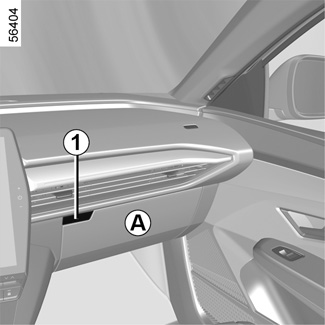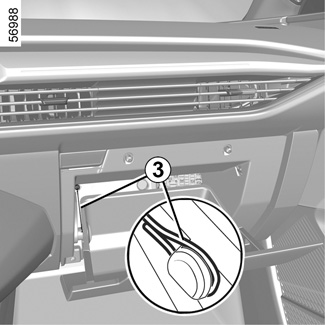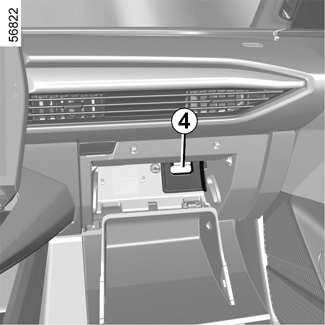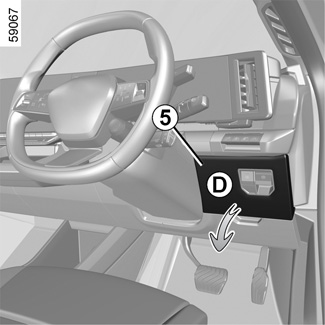FUSES


Fuse box
If any electrical component does not work, check the condition of the fuses.
The fuses are accessible behind the storage compartment A. Open the storage compartment door A using the open button 1.
Once open, turn the stops 2 a quarter of a turn (movements B and C) to remove them.

Unhook the 3 wire to release the storage compartment door to access the fuse box.

Tilt the storage compartment door A downwards as far as it will go.
You have direct access to the fuse compartment 4.

Fuse box D
Unclip the access flap 5.

Tweezers 6
Remove the fuse using the tweezers 6 located on the fuse plate.
To remove the fuse from the tweezers, slide the fuse to the side.
It is not advisable to use the free fuse locations.
In accordance with local legislation or as a precautionary measure:
Obtain an emergency kit containing a set of spare bulbs and fuses from an approved Dealer.
Check the fuse in question and replace it, if necessary, by a fuse of the same rating.
If a fuse is fitted where the rating is too high, it may cause the electrical circuit to overheat (risk of fire) in the event of an item of equipment using an excessive amount of current.
Allocation of fuses
(the presence of certain fuse depends on the vehicle equipment level)
Symbol | Allocation | ||
|---|---|---|---|
D
| Direction indicator lights, hazard warning lights
| ||
×
| Brake lights
| ||
f
| Rear windscreen wiper
| ||
| One-touch electric windows
| ||
Ý
| Towbar socket
| ||
î
| Multimedia accessories socket, multimedia screen
| ||
Æ
| Cigarette lighter, front and rear second row accessories sockets
| ||
Use the fuse allocation label in the storage compartment to identify the fuses.
Fuse compartment D: The Fuse allocation label is located on the rear of the flap 5.
Certain fuses should only be replaced by a qualified professional. These fuses are not listed on the label.
Only change the fuses represented on the label.
Check the fuse in question and replace it, if necessary, by a fuse of the same rating.
If a fuse is fitted where the rating is too high, it may cause the electrical circuit to overheat (risk of fire) in the event of an item of equipment using an excessive amount of current.